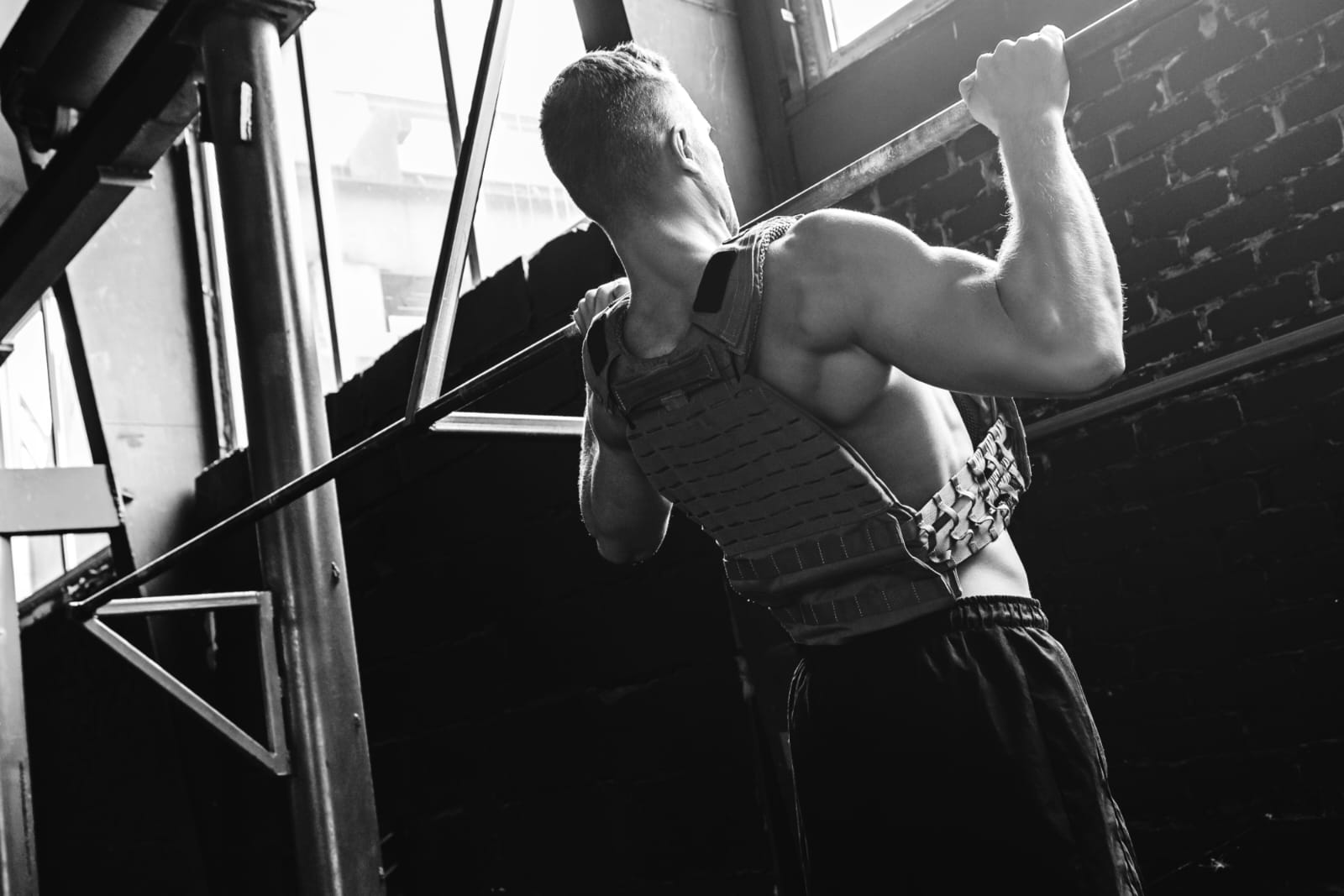Running with a Weighted Vest: Benefits, Guidelines, & Calorie Burn

Running is one of the most popular forms of exercise worldwide. It is a great way to improve cardiovascular health, increase endurance, and burn calories. If you're looking to take your running up a notch, you might want to consider adding a weighted vest to your routine. In this article, you can read about the benefits of running with a weighted vest, how to choose the appropriate weight, and how many calories you can burn.
What is a Weighted Vest?
A weighted vest is a workout accessory made of durable material that has pockets to hold weights. The vest can be adjusted to fit snugly on the body, and the weights can be added or removed to meet the users resistance requirements. Weighted vests add resistance to exercises such as running, push-ups, and squats. They are also used in CrossFit workouts, military training, and other forms of high-intensity training.
How does a Weight Vest improve jogging performance?
The key to understanding how a weighted vest improves jogging performance lies in the principle of progressive overload. Progressive overload is the gradual increase in the intensity, duration, or frequency of exercise to continually challenge the body and stimulate further improvements in fitness.
When you add a weighted vest to your jogging routine, you're essentially adding extra resistance to your body. This increased resistance makes your muscles work harder, leading to greater muscle activation and recruitment. Over time, this increased demand on your muscles can lead to improvements in strength, power, and endurance
Furthermore, jogging with a weighted vest also increases the load on your cardiovascular system. Your heart and lungs have to work harder to supply oxygen and nutrients to your muscles, improving your cardiovascular endurance in the process
Calories Burned Running with a Weighted Vest
Running with a weighted vest can help you burn more calories than running without one. The added resistance increases the intensity of the workout, which can lead to more calories burned. The number of calories you burn while running with a weighted vest depends on several factors, such as your weight, the distance you run, and the weight of the vest. On average, a 70kg (155-pound) person can burn 7-10 calories per minute while running with a weighted vest.

How Much Weight Should You Use?
The amount of weight you should use when running with a weighted vest depends on your fitness level and experience. If you are new to running or have never used a weighted vest before, we suggest you start with a lighter weight, such as 5-10% of your body weight. As you become more comfortable with the added resistance, you can gradually increase the weight.
For experienced runners, a weighted vest can add a significant challenge to their workout. Some runners may use up to 20% of their body weight, but it's important not to overdo it. Running with too much weight can lead to injury or muscle strain.
Health Benefits of Running with a Weighted Vest
Running with a weighted vest can provide many benefits, including increased intensity, improved form, and increased calorie burn. Start with a lighter weight and gradually increase as you become more comfortable. Always listen to your body and avoid using too much weight, which can lead to injury. With the right approach, running with a weighted vest can take your running to the next level and help you achieve your fitness goals.
Improved Bone Health
In addition to the benefits mentioned above, running with a weighted vest can also help improve bone density and reduce the risk of osteoporosis. The extra weight puts more stress on the bones, which can stimulate bone growth and increase bone density.
Improved Heart Health
Running with a weighted vest can also help improve cardiovascular health. The added resistance increases the workload on the heart, which can help improve heart function and reduce the risk of heart disease.
Mental Toughness
In addition to the physical benefits, jogging with a weighted vest can also have a positive impact on your mental toughness. Pushing yourself to complete a challenging workout can help build mental resilience and discipline, which can carry over to other areas of your life.
Jogging form Improvements
Another benefit of running with a weighted vest is that it can help improve your running form. The extra weight can force you to focus on your posture and running technique, which can help you run more efficiently and reduce your risk of injury.

How to Incorporate a Weighted Vest into your Jogging Routine
- Start with shorter distances: Begin by incorporating the weighted vest into shorter jogging sessions. This allows your body to adapt to the added resistance without overwhelming your muscles and joints.
- Gradually increase duration and intensity: Once you feel comfortable with the weighted vest, gradually increase the duration and intensity of your jogging sessions. This can be done by either increasing the distance or incorporating intervals of higher intensity.
- Mix it up: To keep your workouts challenging and prevent plateaus, mix up your jogging routine with different variations. This can include hill sprints, interval training, or incorporating bodyweight exercises such as lunges or squats into your jog.
- Listen to your body: Pay attention to how your body responds to the added resistance. If you begin to experience excessive fatigue, pain, or joint discomfort, it may be a sign to decrease the intensity or take a break from using the weighted vest.
- Rest and recovery: Just like any other form of exercise, rest and recovery are crucial for optimal results. Make sure to schedule rest days in between your weighted vest jogging sessions to allow your muscles to repair and grow stronger.
By following these tips, you can effectively incorporate a weighted vest into your jogging routine and maximise the benefits of your workouts.
Safety Precautions
While jogging with a weighted vest can be highly effective, it's essential to prioritise safety to prevent any injuries. Here are some safety precautions to keep in mind:
- Start with a lighter weight: If you're new to using a weighted vest, start with a lighter weight and gradually increase the resistance over time. This allows your body to adapt to the added load and reduces the risk of strain or injury.
- Maintain proper form: Focus on maintaining good posture and proper running form while wearing a weighted vest. This helps distribute the load evenly and reduces the strain on specific muscles or joints.
- Listen to your body: Pay attention to how your body feels during and after your jogging sessions. If you experience any pain, discomfort, or unusual fatigue, it's important to take a break and rest. Pushing through pain can lead to overuse injuries.
- Stay hydrated: Jogging with a weighted vest can increase your body's demand for water. Make sure to drink plenty of fluids before, during, and after your workouts to stay properly hydrated.
- Gradually increase intensity: As you get stronger and more comfortable with the weighted vest, you can gradually increase the intensity of your workouts. This can be done by either increasing the weight of the vest or the duration and intensity of your jogging sessions.
By following these safety precautions, you can minimise the risk of injury and enjoy the full benefits of jogging with a weighted vest.






